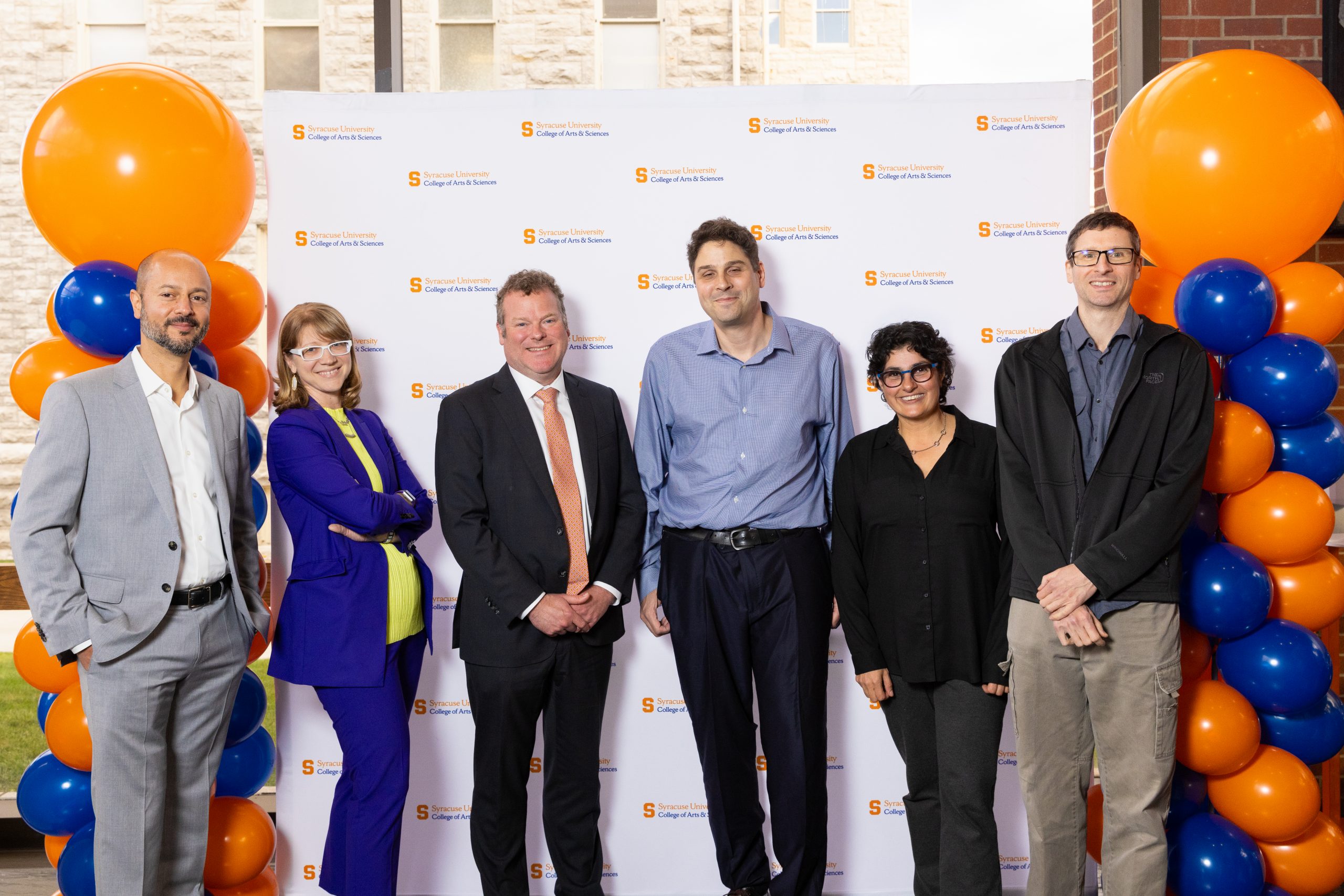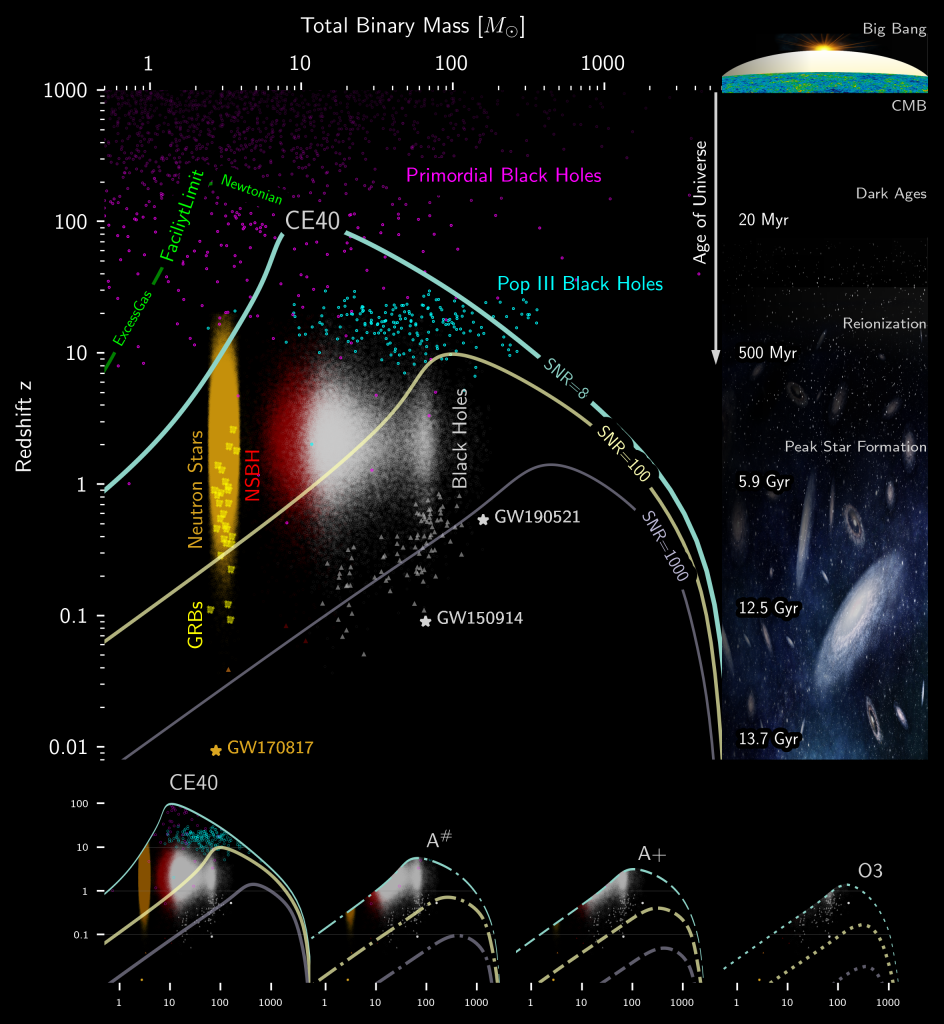Celebrating a Decade of Gravitational Waves
By Dan Bernardi September 12, 2025
Ten years ago, a faint ripple in the fabric of space-time forever changed our understanding of the Universe. On September 14, 2015, scientists at the Laser Interferometer Gravitational-Wave Observatory (LIGO) made the first direct detection of gravitational waves—disturbances caused by the collision of two black holes more than a billion light-years away. The signal, named GW150914, was observed simultaneously at two LIGO sites: LIGO Livingston Observatory in Livingston, Louisiana and LIGO Hanford Observatory in Hanford, Washington. This historic breakthrough confirmed a century-old prediction by Albert Einstein and opened a new window into the cosmos.
Full Story Here!
Physics Professor Craig Cahillane Wins 2024 ARPA-E IGNIITE Award
By Dan Bernardi July 11, 2024
Craig Cahillane, assistant professor of physics in the College of Arts and Sciences, has been named an Inspiring Generations of New Innovators to Impact Technologies in Energy 2024 (IGNIITE 2024) award recipient. As one of only 23 winners across the country, Cahillane receives $500,000 in funding to support his work with fusion energy optimization. In total, approximately $11.5 million was distributed to early-career scientists and engineers through the IGNIITE 2024 program.
IGNIITE is led by the U.S. Department of Energy Advanced Research Projects Agency-Energy (ARPA-E), which promotes and funds research and development of advanced energy technologies to ensure that the U.S. maintains its technological leadership in those areas. The award provides Cahillane with research funding and access to dedicated events, meetings and mentorship activities to maximize the impact of his work.
The grant will support his project, “Ultra-High Power Photoneutralization Cavity for Neutral Beam Injection in Fusion Reactors,” which has the potential to make fusion reactors nearly twice as efficient as current technology.
Full Story Here!
A&S Physicist Awarded NASA Grant to Model One of the Cosmos’ Most Extreme Events
By Dan Bernardi June 3, 2024
Eric Coughlin, professor of physics in Syracuse University’s College of Arts and Sciences, was recently awarded a grant from NASA for his project entitled, “Extragalactic outbursts and repeating nuclear flares from tidal disruption events.” The three-year $346,000 award will support his research on tidal disruption events (TDEs) – one of the cosmos’ most extreme occurrences where a star is completely or partially destroyed by the gravitational field of a supermassive black hole (SMBH).
By examining the formation of accretion flares – the very hot, bright shredded stellar material that falls into the black hole during a TDE – astrophysicists can gain novel insights about the evolution of SMBHs, including such demographics as their mass and spin distributions. With improvements in technology like NASA’s NICER telescope, scientists have been able to detect more TDEs than ever. While these telescopes allow scientists to make direct observations of TDEs, theoretical models are necessary to relate observations to physical properties of the disrupted star (e.g., its mass) and the disrupting black hole (e.g., its mass).
Full Story Here!
A&S Physicist Awarded NSF Research Grant for Two Projects That Will Increase Our Understanding of Gravitational Waves
By Kerrie Marshall May 7, 2024
The Department of Physics at Syracuse University has long partnered with the Laser Interferometer Gravitational-Wave Observatory (LIGO) to gain a deeper understanding of the fundamental workings of the universe. In 2015, the Syracuse University Gravitational Wave Group played a leading role in a discovery that confirmed Albert Einstein’s general theory of relativity, with the first detection of gravitational waves. Since then, physicists from the College of Arts and Sciences have been continuing to advance this body of knowledge.
Among these physicists, Professor Collin Capano has been awarded a continuing research grant from the U.S. National Science Foundation (NSF) for two of his projects which began in January of 2024 and are scheduled to be complete by fall of 2026. Capano is also the director of Syracuse University’s Open Source Project Office (OSPO), which is the University’s central information hub for using open source software (code that anyone can inspect, modify and enhance).
Full Story Here!
NSF’s MPS Advisory Subcommittee recommends Cosmic Explorer be selected as the Next-Generation US-based Gravitational Wave Observatory
By Stefan Ballmer April 2, 2024
National Science Foundation’s Mathematical and Physical Sciences Next-Generation Gravitational Wave Observatory Subcommittee’s report recommends that the Cosmic Explorer Observatory concept will be adopted by the NSF.[1]
Vicky Kalogera, Daniel I. Linzer Distinguished University Professor at Northwestern University and chair of the subcommittee, presented the findings at a March 26 meeting of the National Science Foundation’s MPS Advisory Committee. She highlighted the broad scientific discovery potential for next-generation gravitational-wave facilities and emphasized that the Cosmic Explorer 40km detector design has extraordinary potential for new discoveries while at the same time carrying the lowest technical risk. A variety of networks were recommended which include the operation of two Cosmic Explorer observatories in the US, LIGO India, and Europe’s Einstein Telescope. She emphasized the importance of Cosmic Explorer as a long-term investment in US science infrastructure.
[1] The subcommittee’s web page, charge, call for white papers, and final report can be found here: https://www.nsf.gov/mps/phy/nggw.jsp
Syracuse University Center for Gravitational Wave Astronomy and Astrophysics Opening Ceremony October 13, 2023

On October 13, 2023, The Syracuse University Physics Department along with the College of Arts and Sciences hosted the opening celebration of the Gravitational Wave Astronomy and Astrophysics Center.
Read the College of Arts and Sciences article here!
Read the Syracuse University STEM article here!
————————————————————————————————————
Five NSF Grants Fund Syracuse University Researchers’ Work with Cosmic Explorer
Researchers from the University’s new Center for Gravitational Wave Astronomy and Astrophysics are at the intellectual center of the next-generation observatory.
Read the Article by Dan Bernardi
————————————————————————————————————
The National Science Foundation funds coordinated proposals to start the Cosmic Explorer Design Phase
The National Science Foundation awarded funding to a set of coordinated proposals submitted by members of the Cosmic Explorer Project — a significant level of support totaling approximately $9M USD over the coming three years. The twelve institutions that will be supported by these awards have a diverse and geographically broad span; they are Bard College, California State University Fullerton, California Institute of Technology, Massachusetts Institute of Technology, Penn State University, University of California Riverside, Syracuse University, the University of Arizona, the University of Florida, the University of Minnesota, the University of Oregon, and the University of Washington Bothell.
The four funded awards are
- “Launching the Cosmic Explorer Conceptual Design”. (NSF Award 2309064)
- “Collaborative Research: Identifying and Evaluating Sites for Cosmic Explorer.” (NSF Awards 2308985, 2308986, 2308987, 2308988, 2308989, 2308990)
- “Cosmic Explorer Optical Design.”
(NSF awards: 2309265, 2309266, 2309267, 2309268) - “Enabling Megawatt Optical Power in Cosmic Explorer.”
(NSF Awards 2309006 and 2309007)
and two proposals were recommended for funding:
- “Local Gravity Disturbances and Next-Generation Gravitational-Wave Astrophysics.”
- “Cosmic Explorer: Research and Conceptual Designs for Scattered-Light Mitigation.”
In addition to these ‘Project’ oriented awards, the NSF and other funding agencies are supporting a broad range of activities supporting the Cosmic Explorer concept and the observational science that can be anticipated. These include:
- “Center for Coatings Research” (Stanford University, Syracuse University, University of Florida, American University, Embry-Riddle, University of California, Berkeley, Colorado State University, CSULA, and Hobart and William Smith.) NSF Awards 2309289, 2309290, 2309291, 2309292, 2309293, 2309294, 2309295, 2309296, 2309297.
- “Neutron stars and gravitational waves from LIGO to Cosmic Explorer” (Texas Tech University). NSF Award 2309305.
- “Cosmic Collisions, Relativistic Blasts, and their Remnants in the Era of Multi-Messenger Astronomy” (Texas Tech University). NSF Award 2307358.
US collaborators include members of the Cosmic Explorer Project and Consortium and international collaborators in the UK, Germany, Australia, and Canada. These efforts will make major steps toward the realization of Cosmic Explorer and contribute to the Cosmic Explorer Conceptual Design. As part of the UK contribution, UKRI have announced the award of funding (£8M over 4 financial years from FY2023/24) from its infrastructure Fund for a scoping project (“Next-gen GW: the next generation gravitational wave infrastructure”) to enable conceptual design of instrumental and computational technologies for next-generation GW infrastructures, supporting the work of a consortium of 7 UK Universities.
————————————————————————————————————
Cosmic Explorer Project Submits a White Paper in Response to NSF’s Next Generation Gravitational-Wave Committee’s Call
The National Science Foundation (NSF) appointed a sub-committee next-generation Gravitational Wave committee (ngGW) of the Mathematical and Physical Sciences Advisory Committee (MPSAC) to assess and recommend configurations for a U.S. GW detection network that can operate at a sensitivity approximately an order of magnitude greater than that of LIGO A+ by the middle of the next decade. The sub-committee has invited White Papers from the community addressing the science motivation and key science objectives, technical description of the proposed concept(s) and how different aspects are associated with key science, current and new technologies needed, risks, timelines, and approximate cost assessment, any synergies or dependencies on other multi-messenger facilities (existing or future). The CE project conducted a trade study to assess the relative performances of plausible detector networks operating in the 2030s and summarized the findings in the White Paper submitted in response to that call. The white paper is supported by a longer technical report that details the trade study carried out to assess the performance of a network consisting of two Cosmic Explorer observatories (one 40 km arm and one 20 km arm) operating in conjunction with upgraded existing facilities or new observatories and it serves as the technical basis for what is reported in the project’s submission.
A brief summary of the White Paper is as follows: Major discoveries in astronomy are driven by three related improvements: better sensitivity, higher precision, and opening new observational windows. Cosmic Explorer promises all three and will deliver an order-of-magnitude greater sensitivity than LIGO. Cosmic Explorer will push the gravitational-wave frontier to almost the edge of the observable universe using technologies that have been proven by LIGO during its development. Cosmic Explorer will make discoveries that cannot yet be anticipated, especially since gravitational waves are both synergistic with electromagnetic observations and can at the same time reach into regions of the universe that electromagnetic observations cannot explore. With Cosmic Explorer, scientists can use the universe as a laboratory to test the laws of physics and study the nature of matter. With its extraordinary discovery potential, Cosmic Explorer will deliver revolutionary observations across astronomy, physics, and cosmology including: Black Holes and Neutron Stars Throughout Cosmic Time, Multi-Messenger Astrophysics and Dynamics of Dense Matter, New Probes of Extreme Astrophysics, Fundamental Physics and Precision Cosmology, Dark Matter and the Early Universe. Cosmic Explorer allows the United States to continue its leading role in gravitational-wave science and the international network of next-generation observatories.
by B.S. Sathyaprakash on August 4, 2023

